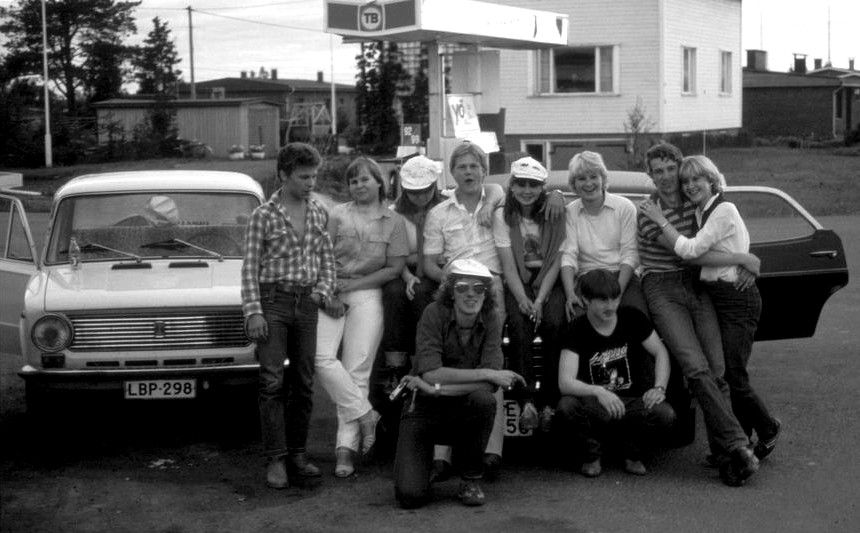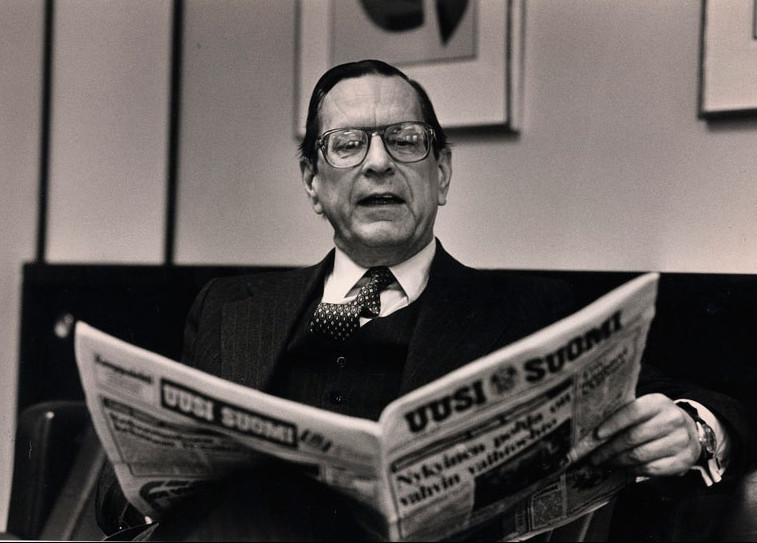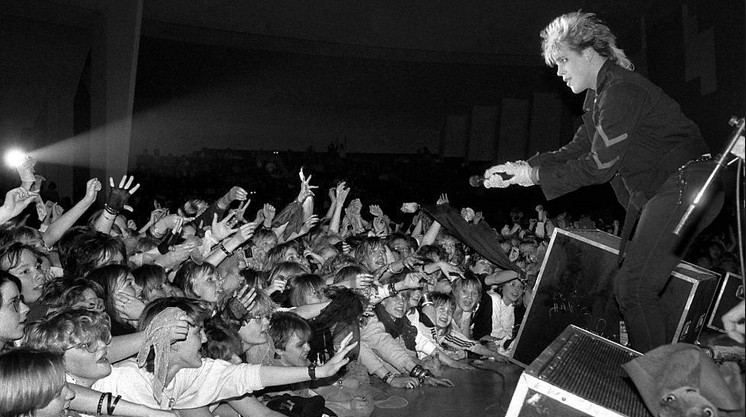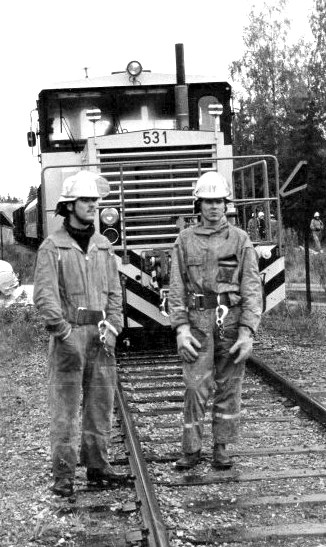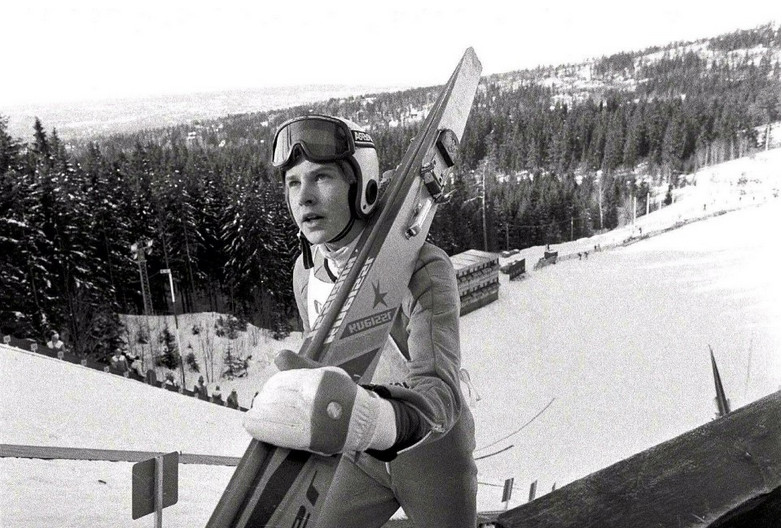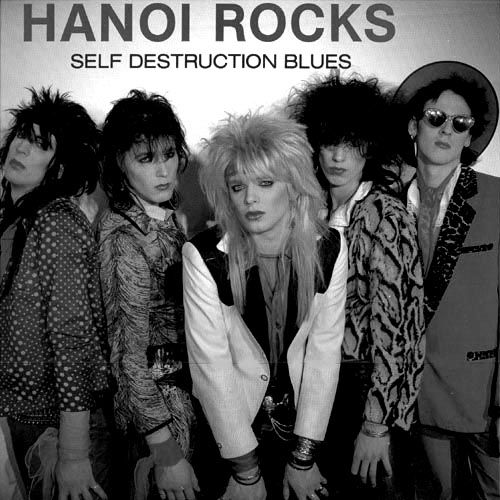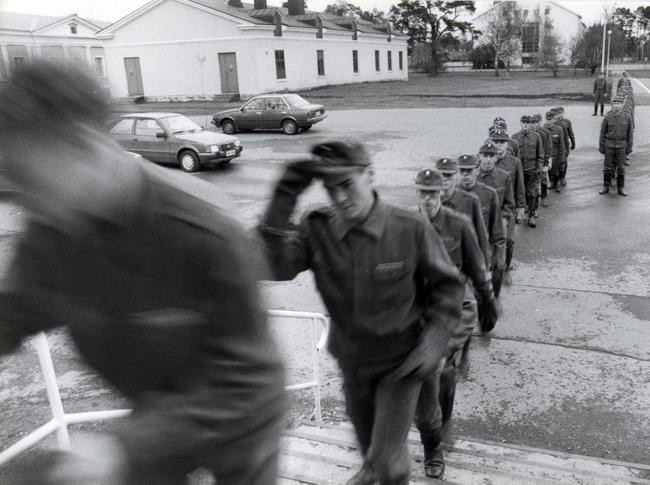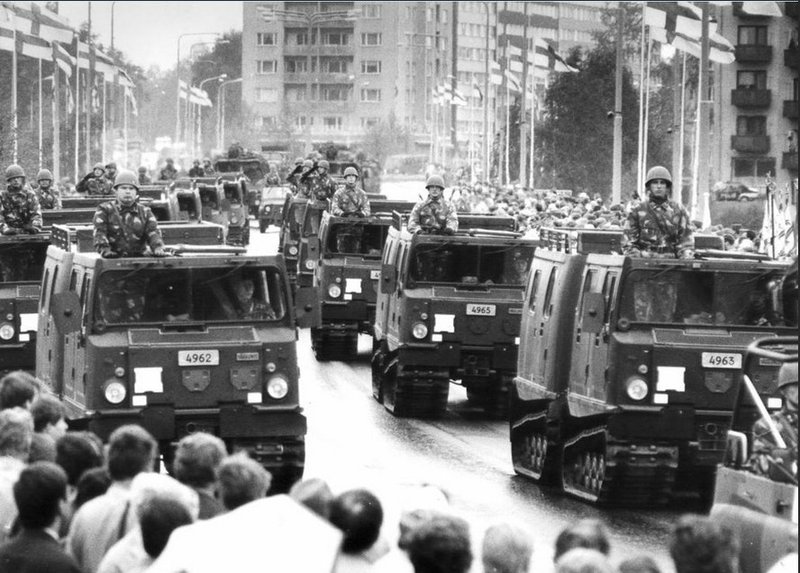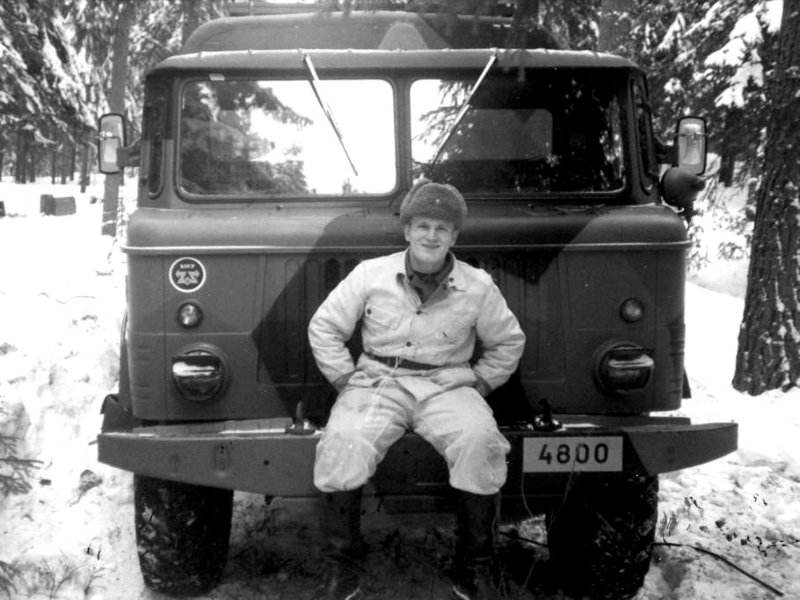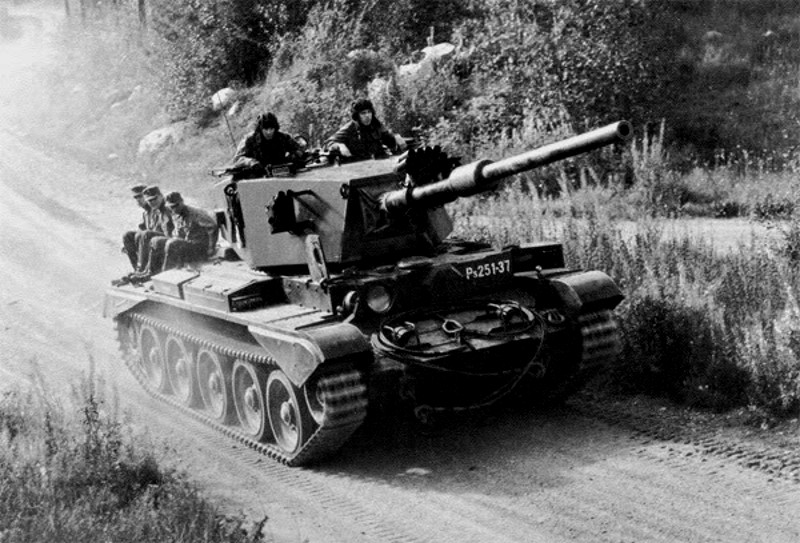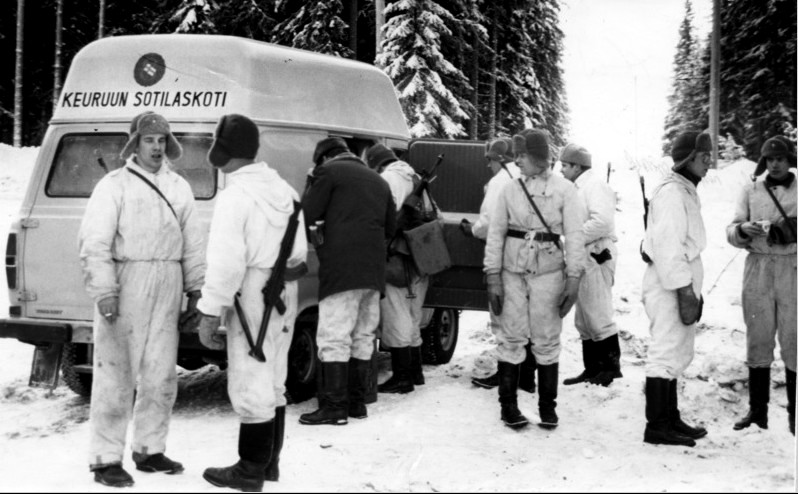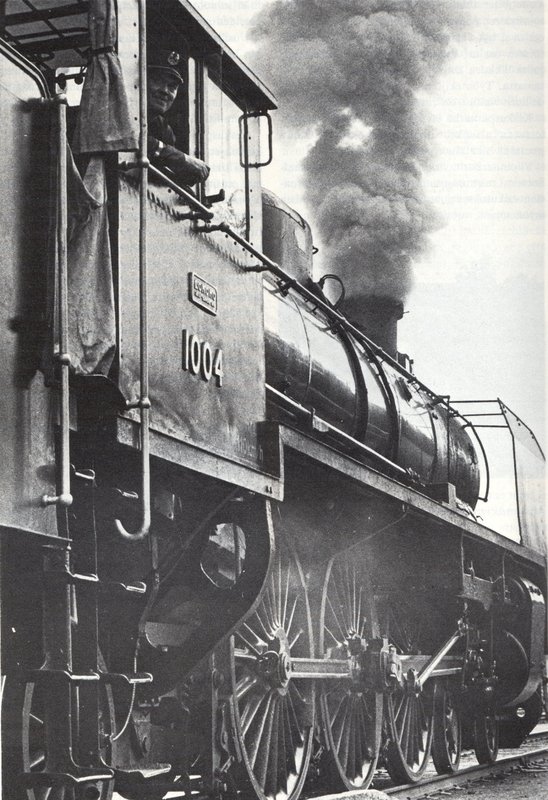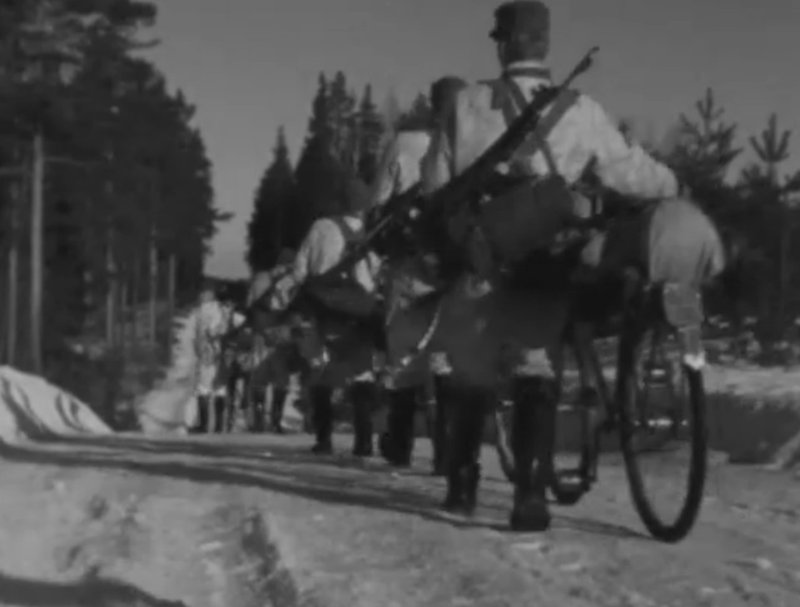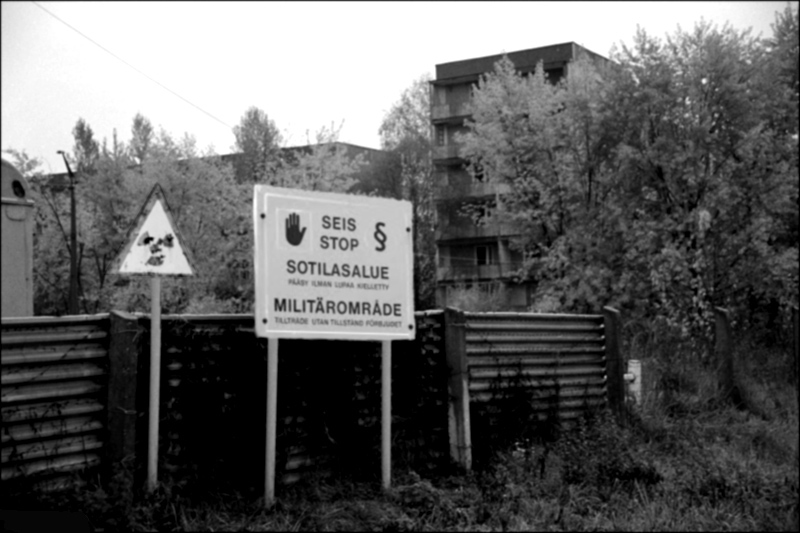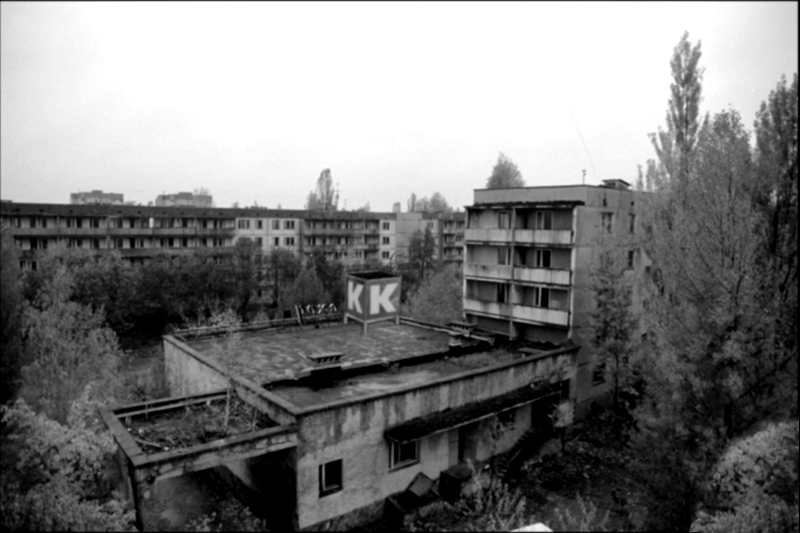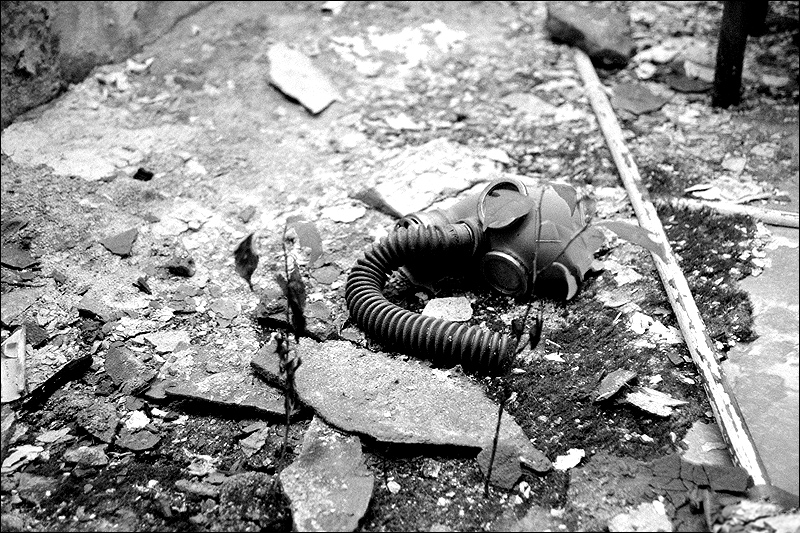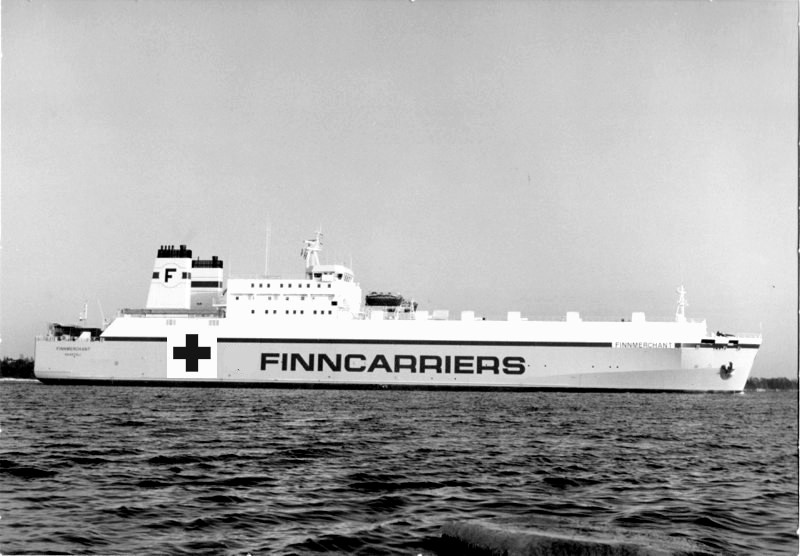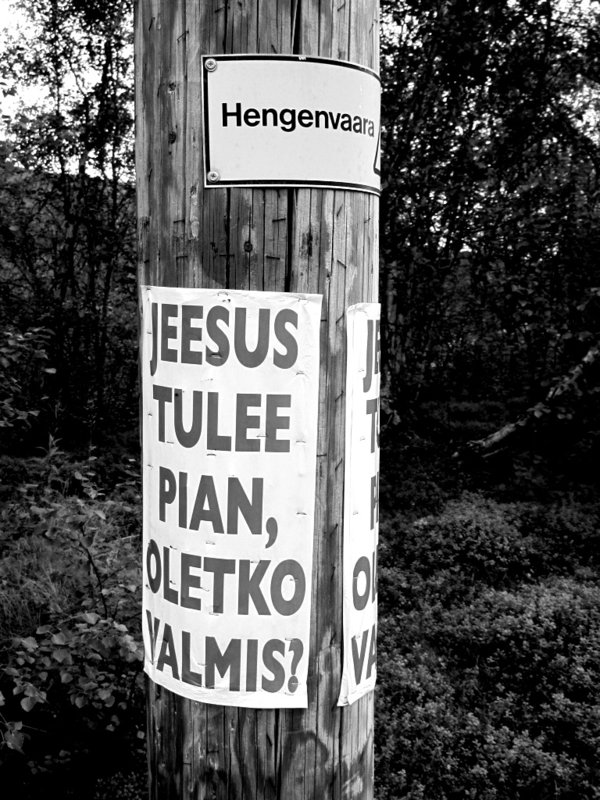…
I had a dream of Heaven
Didn't see myself there
It's easy to pretend to be an angel
Hard to be just human
If Heaven is only for little angels,
Is there any room left for us?
If Heaven is only for little angels,
Who opens the doors for the misguided?
If Heaven was made for little angels,
Is there any room left for us?
If Heaven is only for little angels,
Who shows the way for those that are lost?
...
SIG:
Jos taivas on vain pienille enkeleille (1982)
Jesus is coming soon, are you ready? Near Kajaani, June 1984. FNA archives.
L: Matters of Faith, Part 1
… Finland as well as other nations, the escalating threat of nuclear war caused in late 1983 and early 1984 a lot of discussion and activity among the various religious communities. The national churches, the Finnish Evangelical Lutheran Church and the Finnish Orthodox Church attempted to act as moderating influences – as much had been agreed between church leaders in informal discussions throughout late 1983. The Lutheran Archbishop of Turku, John Vikström, and the Orthodox Bishop of Karelia and Finland, Paavali, were both of the opinion that the role of the religious leaders was not to fan the war scare and flaunt apocalyptic visions to the believers, but to help the people and the authorities through the difficult times with consolation and guidance. From the pulpits of the main churches, then, the people flocking to the various places of worship during the turn of 1983-84 heard a message of patience, hope and mercy.
During the run-up to the war, the official churches, especially the Finnish Evangelical Lutheran Church as the dominant religious organization in the land, were of course heavily involved in the war preparations and the mobilization. The spiritual (and partly physical) well-being of the Finnish soldiers would be maintained by military chaplains, both Lutheran and Orthodox, often young theology students who had been appointed to this task when they were conscripted, and during a possible war, the church would also play a role in looking after the casualties: recording the dead and delivering fallen soldiers to their last resting places was a task the church had as a legacy of the Second World War. The Finnish military's religious organization was then as today led by the Military Bishop, in 1984 Viljo Remes, a doctor of theology with a career with the Finnish Missionary Society.[1]
Finland had several religious organizations in addition to the official churches, too. Different independent Christian groups had followers across the nation, especially along the Western coast and in the North. This included various Christian revival movements; Lutherans affiliated with the official church, influenced by Pietism or neo-Pietism, such as Laestadianism, Evangelism and the Awakening, and ”independents”, often adherents of charismatic movements such as Pentecostals, Baptists, Methodists, and Adventists. Apart from these groups, Jehovah's Witnesses were a major independent religious group, in membership next to the official churches.
Among many of these movements, the the world slipping ever closer to the nuclear abyss caused a rise in expectations of the End Times and the return of Jesus Christ. The expected nuclear war was seen among many as the final battle between Good and Evil, or at least a prelude to Armageddon itself. Before Christmas 1983, posters proclaiming the imminent return of Our Lord and Saviour became commonplace along roads and highways, and self-styled evangelists and prophets rose among many groups, Laestadians, Pentecostals and Jehovah's Witnesses especially, as these were the biggest groups by membership. Large gatherings were organized in various towns and villages, and the prophets would go around proclaiming a need for repentance and demanding the people to abandon sin and worldliness in expectation of Rapture.
Already in January, these activities caused small-scale disturbances attributed to religious frenzy in some municipalities, leading to official worry about the religious activities potentially causing disruption for the national emergency preparations and the mobilization. This was seen especially during the evacuation of Lapland, which was slowed down by entire villages of believers refusing to leave their homes, with their leaders telling the police and military officials that they would wait for the world to end where they were and that the Lord would take care of His own.
The authorities were especially wary of radical leaders rising among the Jehovah's Witnesses, as in stark contrast to the strictly Protestant movements, the creed of this group was awowedly against the ”worldly” powers. The members of the group were already traditionally declining military duty and serving prison sentences for this transgression. In January, voices among the national police command suggested taking a number of religious leaders into extraordinary custody as a ”pre-emptive” measure, in the similar vein as was being done to known political troublemakers, far Left activists and suspected Soviet operatives, but despite some sympathy from the highest political leadership, the plan was still considered too controversial to implement.[2]
After the destruction and chaos caused by the Exchange and the aftermath, many of these religious organizations and groups were to have very important parts to play in the survival of the Finnish citizens, as well as the first measures towards rebuilding the local and national structures of society. As the national leadership and in many places even the municipal organizations broke down for a period of time post-Exchange, the religious communities would often offer the framework for survival. Most prominently this process was to be seen in the Oulu Province, where the municipalities were often overworked with coping with the evacuees from Lapland, and where the provicincial emergency leadership was decimated by the nuclear weapon that destroyed the provincial capital. In some places, communities would be de facto run by religious leaders or ”community elders” for weeks before the state authorities could reassert even tenous control over most of the pre-War province.
After the Exchange, the official organization of the Finnish Evangelical Lutheran Church was also in tatters. At least four of its bishops had died in the nuclear explosions, including the Archbishop himself. The local Vicars in surviving municipalities and towns were left to their own devices to lead and help their flocks as they could, with the help of the other parish workers. In practice, the local church organizations would in the weeks and months following February-March 1984 become important focal points of volunteer work and recovery, providing many people displaced and stricken by the War an opportunity and a way to use any strength and skills they had at their disposal to help the weak and less fortunate around them. As the local churches and parishes often became centres of relief activities, in the months to come many a parish church would also form a nucleus of a new composite community made of wartime evacuees and refugees, as well as local inhabitants.
Most often the mutual help and cooperation based on religious affiliation proved crucial for survival in these difficult conditions, and helped many groups of people and entire municipalities to weather the worst depredations of the winter of 1983-84. This was also true of those places where the cooperation was not based on the official church organization but also the various independent religious groups. For example in the municipalities of Uurainen and Äänekoski just north of the Jyväskylä blast area, public order would have most likely fallen down entirely and the local people would have succumbed to the fallout and radiation poisoning, unless a local municipality official by the name of Toimi Kankaanniemi would not have organized protective measures against the initial fallout and later evacuations into safer areas due north, basically using his local Pentecostal congregation as an ad hoc civil defence group when the official local leadership was badly paralyzed.[3]
Before the backdrop of these mostly positive developments, in several places however the absense of legal order, extreme apocalyptic views and the influence of charismatic ”prophets” led to tragedies and strange, violent outcomes. The documents and interview material gathered during the Minne 1984 project point towards at least three cases of mass suicides, the most severe case including over one hundred men, women and children.[4] The project's researchers have also interviewed a woman who according to one estimate managed to narrowly escape a mass suicide by a religious group lead by a charismatic leader with a total control over his followers, by secretly leaving her home without informing her family of her plans.
In less severe (and more common) cases, cult leaders or ”elders” used the expected immediate realization of the return of Christ and the Rapture for abusing their position and committed various acts of violence towards their helpless followers, including repeated rapes of women and children. From the sources at the disposal of the project's researchers, it is unsure how often these kinds of crimes were revealed to civilian and military authorities and how often the perpetrators were brought to justice during the post-War years.[5]
It took until the summer 1984 when the surviving church leaders in Finland could gather together to discuss the role of the church and faith in post-nuclear conditions. The so-called Finnish Ecumenical Council of Mikkeli, held in early July in the temporary administrative capital, attended by the surviving bishops of both main churches, a small number of theologians and some members of independent religious communities mostly agreed that the role of the Christian faith in the new world would be one of mercy and support for all measures to help the very real plight of the people suffering from the effects caused by the global war in both physical and metaphysical terms.
All religious and theological differences will have to be put aside to work together for the survival and well-being of the children of the Creator, proclaimed the official communique released by the Ecumenical Council...
...deliberations, the former bishop of the Kuopio diocese, Jukka Malmivaara, was confirmed as the new Lutheran Archbishop, and he immediately started using his position secure the status of the church as an independent organization in cooperation with the Emergency Cabinet. As a result, as of July 1984 all volunteer work done in the name of the official churches was considered as fulfilling the re-defined national work duty requirements. The churches were also confirmed as having an official role in healthcare-related tasks, which was only prudent as most local churches were at the time being used as auxiliary hospitals or refugee centres anyway. The practice of using euthanasia as last-ditch method of relieving the pain of those who would have no realistic chance of recovery divided the church workers heavily, but eventually the practice was reluctantly accepted with the proviso that ordained church workers could not be required to take part in mercy killings.
Weekly church services became a feature of YLE radio broadcasts already in June, at the insistence of Kalevi Toiviainen, the Lutheran bishop of Mikkeli. By all accounts, the church broadcasts were embraced by the people who could listen to the radio, and by late 1984 they were supplemented by daily prayers at preset hours. This all was of course part and parcel of the Emergency Cabinet's plans of making the ”Mikkeli YLE” broadcasts a way to bring the people together and to provide the Finns with help, leadership and relief during the difficult times ahead. The combined results of the Minne 1984 interviews suggest that the religious broadcasts were among the most popular YLE programming in 1984-1985, losing only in popularity to Finnish pop music and Acting President Leppänen's radio speeches.
By all accounts, religiosity saw a big comeback among the survivors of the nuclear war in Finland in the months and years following the apocalyptic events of early 1984. There are many very real reasons for this, and the same process has been observed in all surviving communities in Europe and North America. And like in other nations, also in Finland this new surge in religiosity was not a just a brief fad, but proved to became a permanent feature of the post-War Finnish society through the 80s and 90s. Some researchers of the conditions in post-War Europe, like Macragge (2011) have suggested that this was not just a mass-psychological relapse into traditional religious views and values, but in fact a highly a natural reaction to the world-shattering effects experienced by the generations that saw and lived through the year 1984. Definitely the help and relief received from religious belief, observance, traditions and rituals can be palpably seen in several post-War societies.
In the specific case of Finland it is also easy to see that both the Emergency Cabinet and the National Committee after it have also seeked to enhance and use this new religiosity as a structure to rebuild the cohesion of the Finnish state and nation, by extension making their own position stronger by the way of promoting the Lutheran traditions of accepting legal state authorities as a matter of course as a basic pillar in a harmonious politico-religious worldview...
Notes:
[1] Fin.
Kenttäpiispa, Swe.
Fältbiskop. The term translates directly to ”Field Bishop”. The office and position of the Military Bishop was founded by Marshal Mannerheim in 1941. The Military Bishop, while the member of the Synod of Bishops of the Evangelical Lutheran Church of Finland is not in doctrinal terms an ordained bishop, and can not ordain priests. Also, his jurisdiction, the Finnish Defence Forces (today the FNA military) does not constitute a diocese.
[2] It has been suggested that the plan went as far as to list by name the individuals that would have to be arrested as a first priority, but if such a list existed, it did not survive the Exchange. Apparently the plan was supported by the Minister of Justice, Christoffer Taxell (Swedish People's Party), but opposed by the conservative Minister of Defence, Veikko Pihlajamäki (Centre), a man who had been otherwise very keen on imprisoning ”Communist troublemakers” and ”young hooligan punks”.
[3] Kankaanniemi (formerly of the Christian League) would later be known as a respected provincial religious and community leader, critical of the rule of the National Committee, until he died of cancer in 1998.
[4] This particular tragedy was found out when provincial unit soldiers under the Northern Command in Kajaani attempted to re-establish contact with a group of remote villages in the municipality of [REDACTED] in early May 1984.
[5] It has been also suggested that such practices are still more common among some highly religious communities in the north than many would like to admit, and sometimes the authorities have been said to turn a blind eye to this. This is apparently a matter of some controversy among the FNA leadership even in the 2010s.
